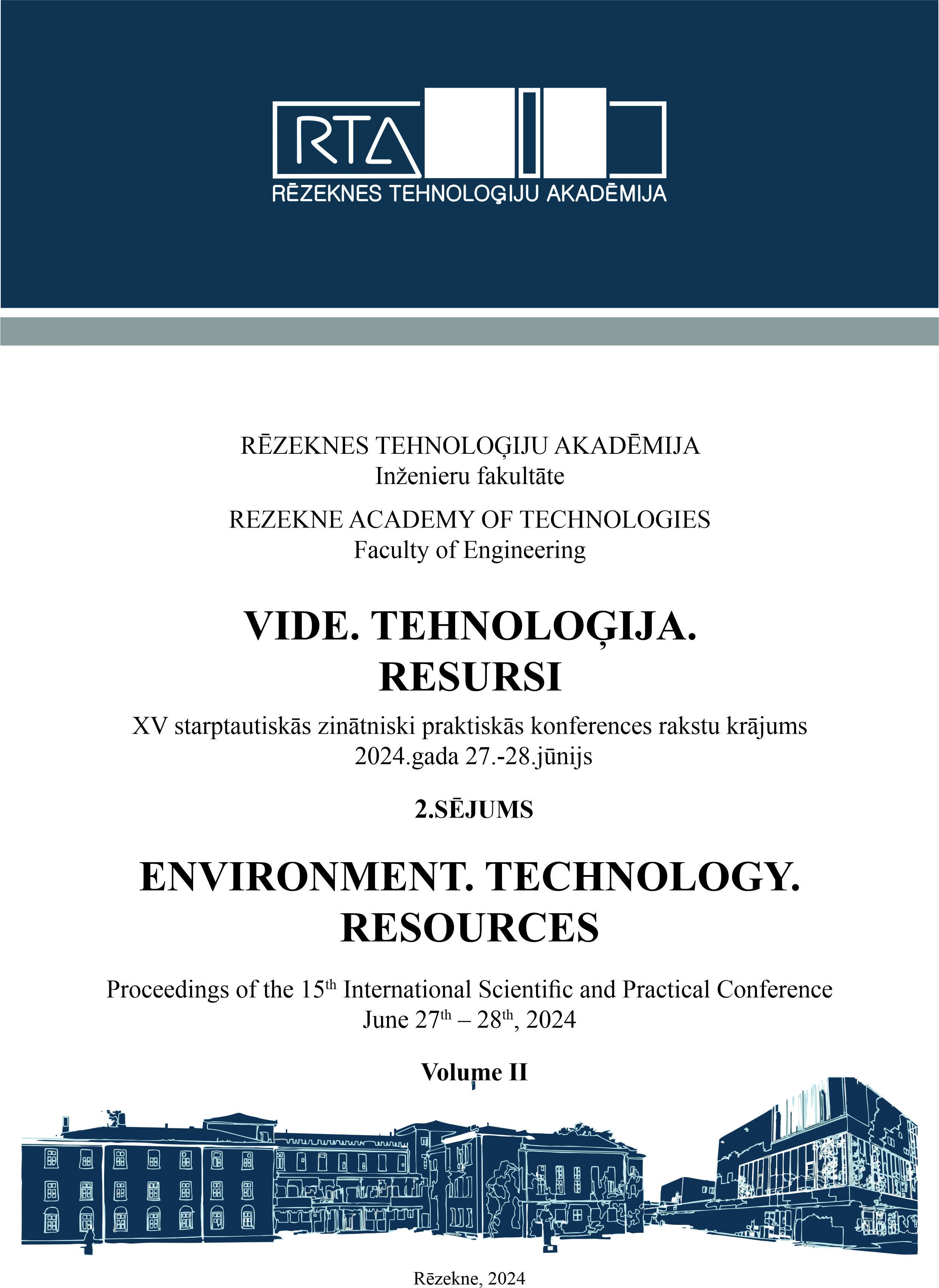FEATURES OF SYNCHRONOUS AND ASYNCHRONOUS E-LEARNING ON THE EXAMPLE OF TEACHING THE EUROPEAN EXPERIENCE OF SOCIAL INCLUSION
DOI:
https://doi.org/10.17770/etr2024vol2.8074Keywords:
asynchronous education, European experience, online education, social inclusion, synchronous education, trainingAbstract
The research focusing on synchronous and asynchronous learning is often reduced to a psychological assessment of the learner. The learner's motivation will determine the success of the learning process. The quality of perception and understanding of the educational content offered will depend on their experience. Familiarity with the research of the international community and European practices allowed us to select interesting content and diversify the module "Social integration of children with special needs in an environment of diversity and inclusion: European approaches" (SEEDUE4UA-101085267), as well as supplement the content of related disciplines.
However, we paid most attention to the issue of synchronous and asynchronous format of the online educational process. We had to implement this aspect of interaction with students due to the consequences of military aggression in Ukraine. And for the convenience of both students and teachers, we created a flexible package of educational content that allowed us to engage young people through the use of video materials, individual and group projects, and quickly change the form of the online classroom (when the lesson began in the synchronous mode of group interaction, and after 20-30 minutes we had to interact with students asynchronously due to the danger to the life and health of the participants in the educational process).
The biggest challenge in the flexible format for our team was the development of emotional intelligence, that is, the ability of students to assess the situation in an inclusive educational environment, conduct supervision, lead a discussion, etc. Among the challenges, we also considered the issue of implementing sections of changes in students' attitudes and perceptions of information as a result of mostly asynchronous interaction.
That is why, in the course of this scientific review, we analysed the forms of interactive interaction we selected, described some of the programmes that were used and involved students with appropriate reflection with elements of simulation games, etc. We also drew an analogy with certain topics studied by full-time students in the traditional offline mode of interaction. This allowed us to draw conclusions about the need to adjust certain elements of the programme for all forms of the educational process based on the results of reflection on certain elements of emotional intelligence development within the framework of simulations of physiological and social skills.
As we noted earlier, this analysis allowed us to revise the amount of material and the format of its presentation for better mastering the module issues, as well as to develop a universal toolkit that can be flexibly used in the process of mastering information on social inclusion and European experience in synchronous and asynchronous formats of both project implementation and teaching of relevant disciplines.
Downloads
References
H. Dargahi, M. Kooshkebaghi, & M. Mireshghollah. 2023. Learner satisfaction with synchronous and asynchronous virtual learning systems during the COVID-19 pandemic in Tehran university of medical sciences: a comparative analysis. BMC Medical Education, 23(1), 886
B. L. Moorhouse, K. M. Wong. 2022. Blending asynchronous and synchronous digital technologies and instructional approaches to facilitate remote learning. Journal of Computers in Education, 9(1), 51-70.
N. Dmitrenko, O. Voloshyna. 2018. Training of Prospective Teachers of Foreign Language to Work in Inclusive ClassesPedagogika. Pedagogy/ Vol. 129, No. 1, pp. 187–205.
R. Kimura, M. Matsunaga, E. Barroga, N. Hayashi. 2023. Asynchronous e-learning with technology-enabled and enhanced training for continuing education of nurses: a scoping review. BMC Medical Education, 23(1), 505.
M. A. Fernández, M. J. Muñoz, J. M. Rivera, R. Léon, E. Escrig, I. Ferrero. 2013. Using Web 2.0 Learning Tools: Two Virtual Experiences?. In 2013 International Conference on Advanced ICT and Education (ICAICTE-13). pp. 454-458. Atlantis Press.
A. P. Pavel, A.Fruth, M. N. Neacsu. 2015. ICT and e-learning–catalysts for innovation and quality in higher education. Procedia economics and finance, 23, 704-711.
S. Fabriz, J. Mendzheritskaya, S. Stehle. 2021. Impact of synchronous and asynchronous settings of online teaching and learning in higher education on students’ learning experience during COVID-19. Frontiers in Psychology, 12, 4544.
A. Mihai. 2014. The virtual classroom: Teaching European studies through webinars. European Political Science, 13, 4-11.
G. Edmonds, & R. Pusch. 2022. Guidance for Designing Asynchronous Learning Experiences for Adult Learners. Region 5 Comprehensive Center.
S. Hrastinski. 2008. The potential of synchronous communication to enhance participation in online discussions: A case study of two e-learning courses. Information & Management, 45(7), 499-506.
S. Z. M. Osman. 2022. Combining Synchronous and Asynchronous Learning: Student Satisfaction with Online Learning Using Learning Management Systems. Journal of Education and E-Learning Research, 9(3), 147-154
P. R. Nisha. 2022. Synchronous and Asynchronous E-learning Styles: Exploring the Effectiveness of Virtual Classes on Tertiary Level EFL Learners. Journal of Sustainable Learning and Development, 2(1), 07-12.
Y.Ghilay. 2022. Quantitative Courses in Higher Education: A Comparison Between Asynchronous and Synchronous Distance Learning. Journal of Education and Learning, 11(5).
Y. Ghilay. 2017. ODL: Online Distance Learning of Quantitative Courses in Higher Education. Advances in Social Sciences Research Journal, 4(18) 62-72.
Downloads
Published
Issue
Section
License
Copyright (c) 2024 Anna Khilya, Olena Kolosova, Tatyana Kronivets, Iryna Sarancha

This work is licensed under a Creative Commons Attribution 4.0 International License.


